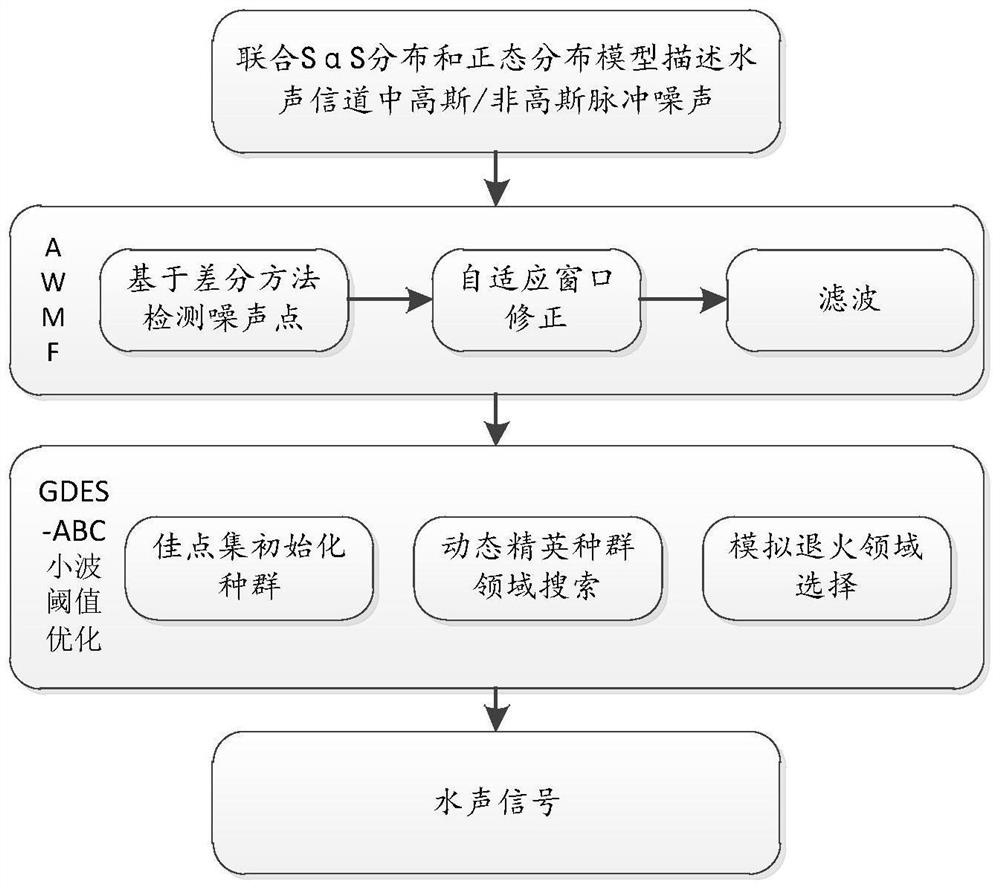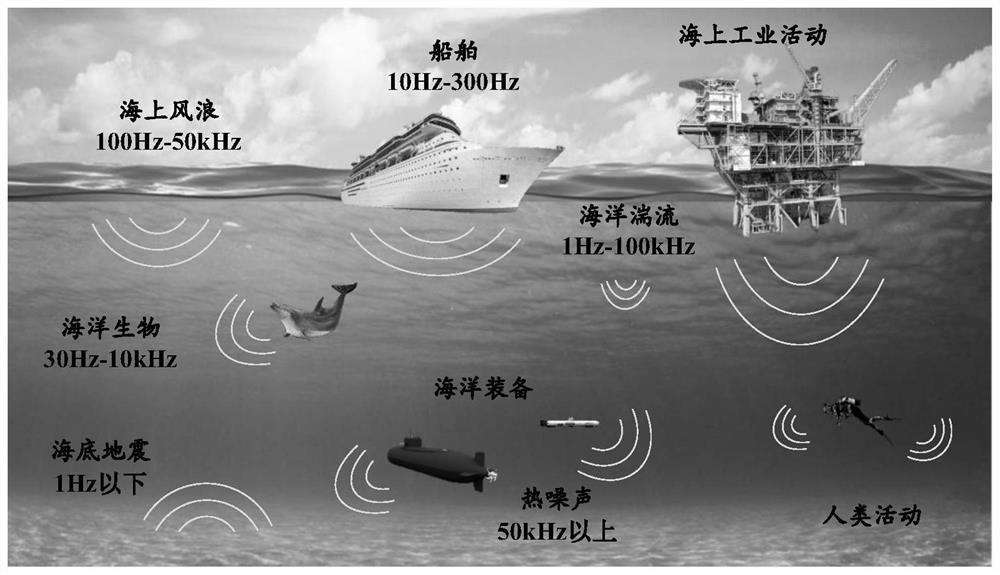Underwater acoustic signal denoising method based on self-adaptive window filtering and wavelet threshold optimization
An adaptive window, underwater acoustic signal technology, applied in ultrasonic/acoustic/infrasonic transmission systems, character and pattern recognition, speech analysis, etc. problems such as small values, to achieve the effect of balancing the filtering performance and computational complexity, suppressing non-Gaussian impulse noise, and improving the suppression ability
- Summary
- Abstract
- Description
- Claims
- Application Information
AI Technical Summary
Problems solved by technology
Method used
Image
Examples
Embodiment 1
[0143] see figure 1 As shown, the underwater acoustic signal denoising method based on AWFM+GDES under a Gaussian / non-Gaussian impulse noise environment described in this embodiment includes the following steps:
[0144] S1: Combine SαS distribution and normal distribution model to describe Gaussian / non-Gaussian impulse noise in the underwater acoustic channel; the specific steps are as follows:
[0145] S1-1: Signal receiving model:
[0146] For the single-transmission and single-reception underwater acoustic communication system, the time-domain signal y(t) received by the receiving end is expressed in digital form, and expressed as a set of discrete samples:
[0147] y(i)=s(i)+e(i), i=1,2,...,N
[0148] where s(i) is the noise-free desired signal with random amplitude and phase; e(i) is the additive ocean background noise; N is the number of samples;
[0149] S1-2: Gaussian / non-Gaussian impulse noise model:
[0150] The probability density function of the instantaneous ...
Embodiment 2
[0257] Embodiment 2: comparative analysis of simulation test results
[0258] In this embodiment, common underwater acoustic communication signals such as 2FSK, QPSK, and 16QAM signals are regarded as SOI, and additive Gaussian white noise and non-Gaussian impulse noise are combined into underwater acoustic noise to verify the performance of the present invention. Wherein the present invention is recorded as AWFM+GDES; The computer configuration used in simulation is: Intel i5-4570 processor, Windows 7 operating system, 4G internal memory, MATLAB R2015b.
[0259] The output SNR is defined as follows:
[0260]
[0261] The noise suppression ratio (NSR) is defined as follows:
[0262]
[0263] Among them, s(i) and are the expected signal and the estimated signal, respectively; and are the mean values of the expected signal and the estimated signal, respectively, and N is the length of the signal.
[0264] Figure 5 The curves of output SNR versus input SNR after...
PUM
 Login to View More
Login to View More Abstract
Description
Claims
Application Information
 Login to View More
Login to View More - R&D
- Intellectual Property
- Life Sciences
- Materials
- Tech Scout
- Unparalleled Data Quality
- Higher Quality Content
- 60% Fewer Hallucinations
Browse by: Latest US Patents, China's latest patents, Technical Efficacy Thesaurus, Application Domain, Technology Topic, Popular Technical Reports.
© 2025 PatSnap. All rights reserved.Legal|Privacy policy|Modern Slavery Act Transparency Statement|Sitemap|About US| Contact US: help@patsnap.com



